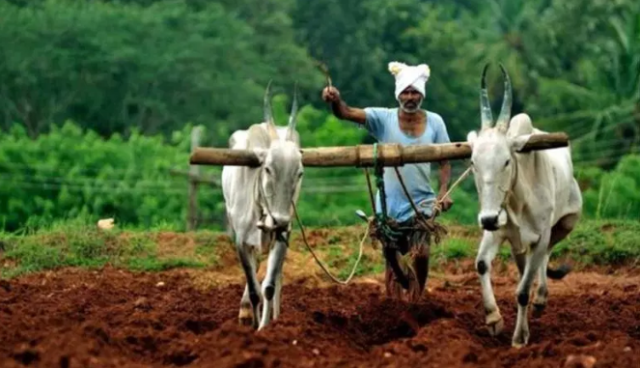
Union Finance Minister Nirmala Sitharaman, in her maiden budget on 5th of July, 2019, said the government will invest more on agricultural infrastructure. She said, "Ease of doing business and ease of living should apply to farmers". She advocated that farmers should take up zero budget farming. Some states have already tried it and farmers are being trained in this regard. Sitharaman added that "Steps like zero budget farming can help in doubling farmers income by 2022, till our 75th year of independence".
What is zero-budget farming?
There are mainly two thrusts behind ‘zero-budget natural farming’. “The term ‘budget’ refers to credit & expenses, therefore the phrase ‘Zero Budget’ means without any credit or without spending any money on purchased inputs,” according to a report by the UN Food and Agriculture Organization. In addition natural farming means farming with the nature & without any chemicals. Zero-budget farming in India was introduced by farmer & agriculturalist Subhash Palekar 25 years ago. It was first evolved in the state of Karnataka. As the farming is done naturally so it cuts down farming expenditure drastically and ends dependence on loans.
The four pillar of zero budget natural farming:-
1. Jivamrita/Jeevamrutha is a fermented microbial culture. It provides nutrients and acts as acatalytic agent that promotes the activity of microbiology in the soil and increases earthworm activity.

How to prepare jeevamrutha
Put 200 liters of water in a cask ; add 10 kg of fresh local cow dung and 5 to 10 liters of cow urine(aged cow). Add 2kg of local type of brown sugar, 2kg flour of pulse and a handful of soil from the bund of the farm. Stir the solution and keep it for 48 hours for fermentation in the shade. Now jeevamrutha is ready. 200 liters is sufficient for one acre of land.
2. Bijamrita/Beejamrutha is a treatment used for seeds. It is useful in protecting young roots from fungus as well as from soil and seed borne diseases that affect plants commonly after monsoon period.
Composition
It is composed of local cow dung, a powerful natural fungicide and cow urine, a strong anti bacterial, lime and soil. These are somehow similar to jeevamrutha.
Application as seed treatment
Add bijamrita/beejamrutha to the seed of any crop, coat them properly with your hand; dry them well and use them for sowing. For Leguminous seeds(Pulse) dip them quickly and let them dry.
3. Acchadana-Mulching
There are three types of Mulching:
-
Soil mulch: This protects top soil during cultivation and prevents tilling. It promotes water retention in soil. Deep ploughing should be avoided.
-
Straw Mulch: It is dried biomass of previous crops,
-
Live Mulch: It is essential to develop multiple cropping patterns of monocotyledons and dicotyledons grown in the same field to supply essential elements to crops. Monocots such as rice and wheat.
4. Whapasa- Moisture: Palekar said roots does not need lot of water but needs water vapour. It is a condition where both air and water molecule are present in soil and irrigation should be reduced and should be done in the noon only.
Principles of zero-budget natural farming
-
Intercropping – Do you how zero-budget natural farming gets its "zero budget" name. It doesn't mean that farmers is going to have no costs at all, but rather that any cost that comes will be compensated for income from intercrops.
-
Contours and bunds - Contours were made to preserve rain water, they promote maximum efficacy for different crops.
-
Local Species of earthworms - we should not use vermicompost as suggested by Palekar. Deep soil earthworms increases organic matter in soil.
-
Cow dung - Dungs from Bos indicus(humped cow) is most beneficial and has highest concentration of micro-organisms as compared to European cows. The entire Zero-Budget natural farming method is centered on the Indian cows.
In Zero budget natural farming expenses are very low. What you yield is not important but what Profit you are making is important.















